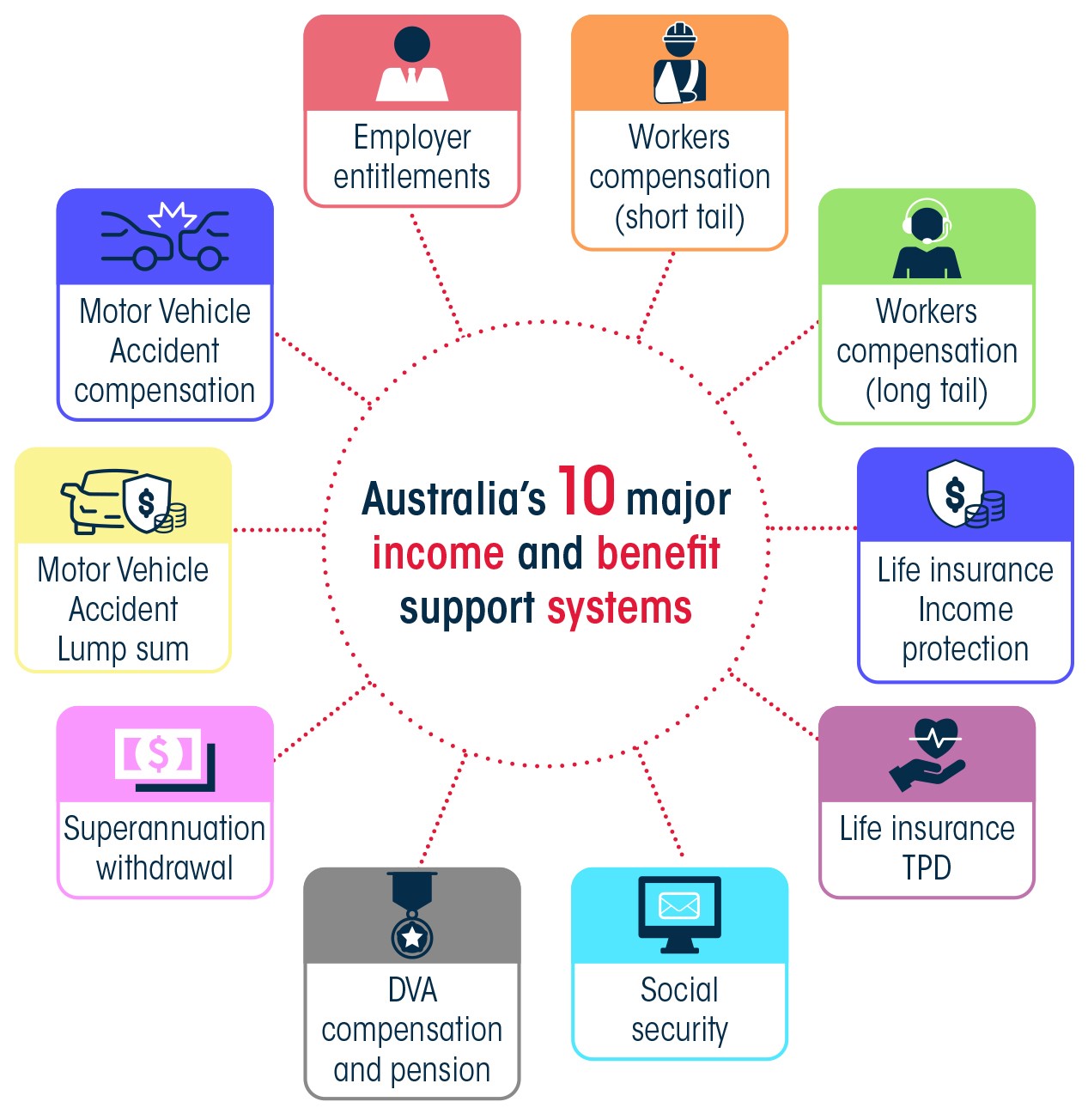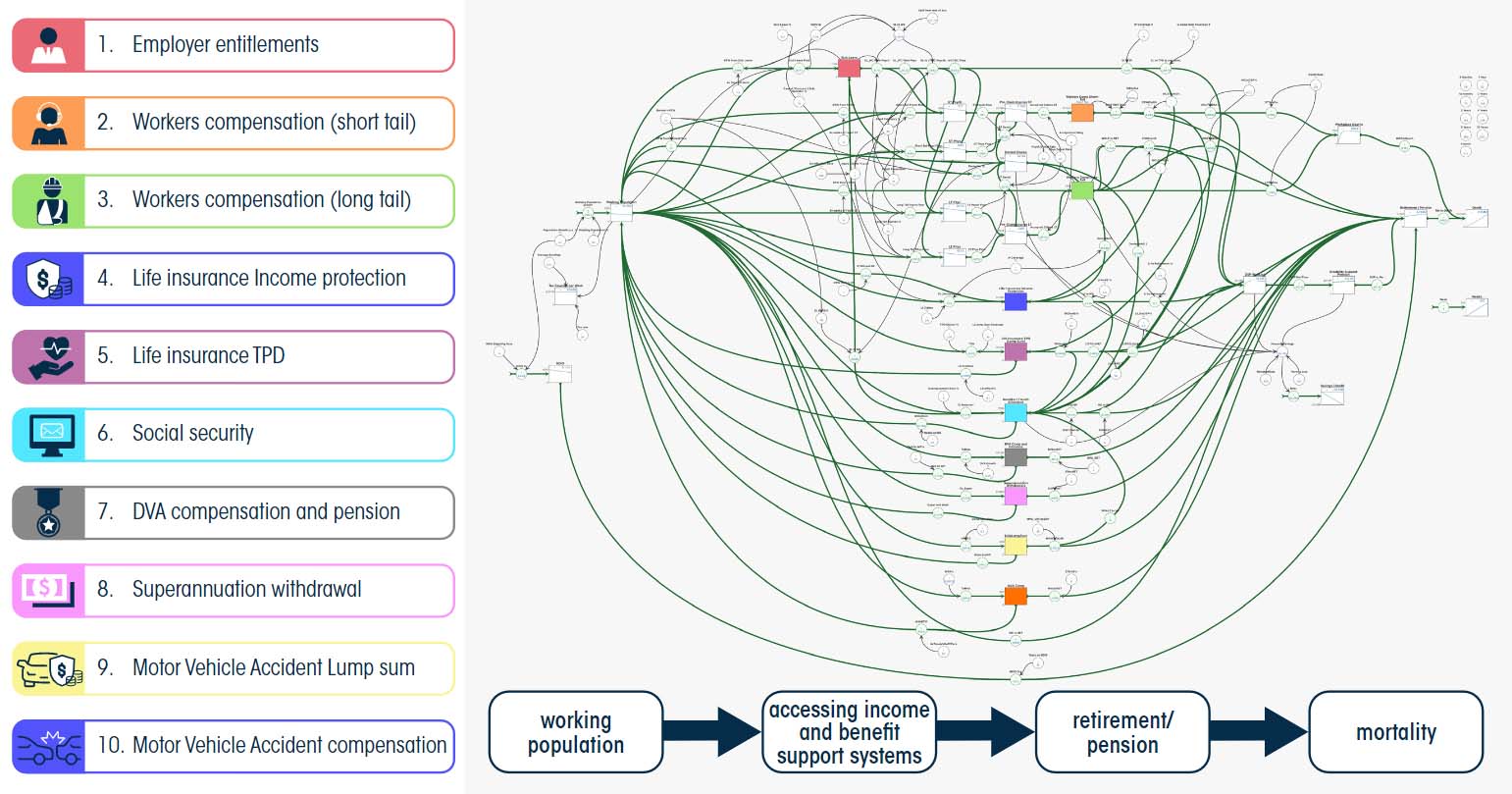Income Support Transition Model
Australia’s ten benefit and income support systems data model.
For the first time in Australia, we have the ability to visualise and better understand the complex behaviours, relationships and transitions between Australia’s ten major benefit and income support systems.
Australia’s 10 benefit and income support systems
Australia has ten benefit and income support systems available to those with a temporary or permanent mental or physical health condition, illness, injury or disability that completely or partially affects their ability to work.

Why the data model was developed
We know that a large number of working age Australians experience periods of temporary or permanent work incapacity due to ill health, disability or injury with many people accessing one or more systems of income and benefit support. Prior research of the Collaborative Partnership identified that a single transition between systems can take months, is highly stressful and often involves long periods of no income.
The data model was developed to determine how a decision made in one system impacts the other systems and the effect this has on the economy, communities, individuals and their families.
Monash University and Melbourne University were funded to develop a data model on the systems of income support as part of the measuring the movement of people between systems project. The model demonstrates possible movements of people through various systems of income support.
The data model

The above is an overview of the System Dynamics Data model. The model reads from left to right, with total eligible working population on the left, the movement of people between income support systems in the middle including assessments and waiting periods followed by retirement, pension and death on the right.
Australia’s 10 benefit and income support systems are illustrated in the image above, as square coloured boxes.
You can use the model to:
- Estimate the movement of people between the ten major benefit and income support systems operating in Australia over a financial year.
- Identify and understand the key pathways and significant drivers of movement between the systems.
- Understand the health, economic and social outcomes for people transitioning between systems and the economic impact to Australia.
- Test the impact of policy levers to inform future approaches to drive improved outcomes for people with a health condition or disability.
The details:
- The model runs over a simulated 10-year period, beginning in 2021 and steps forward one week at a time.
- The model is populated with data that includes the percentage of working population (15 to 65 years) in Australia working full or part-time, and the number of people who are being supported by various systems of income support and/or who are in alternate life stages (e.g., retirement) at the time of model development.
Learn more about the data model
Data model flyer (PDF, 759.7 KB).
Want more information?
Contact us at: collaborativepartnershipsecretariat@comcare.gov.au


